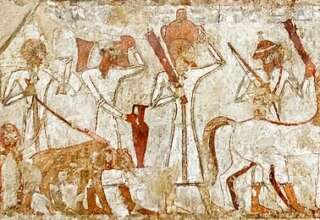
The first quarter-century of the post-revolutionary period (1920–1946) was characterized by revolutionary generals serving as Presidents of Mexico. The post-revolutionary project of the Mexican government sought to bring order to the country, end military intervention in politics, and create organizations of interest groups. Workers, peasants, urban office workers, and even the army for a short period were incorporated as sectors of the single party that dominated Mexican politics from its founding in 1929. From 1946 the election of Miguel Alemán, the first civilian president in the post-revolutionary period, Mexico embarked on an aggressive program of economic development, known as the Mexican miracle, which was characterized by industrialization, urbanization, and the increase of inequality between urban and rural areas.The Green Revolution, a technological movement that led to a significant worldwide increase in crop production, began in the Yaqui Valley of Sonora in the middle of the 20th century.
With robust economic growth, Mexico sought to showcase it to the world by hosting the 1968 Summer Olympics. The government poured huge resources into building new facilities, prompting political unrest among university students and others. Demonstrations in central Mexico City went on for weeks before the planned opening of the games, with the government of Gustavo Díaz Ordaz cracking down. The culmination was the Tlatelolco Massacre, which killed around 300 protesters based on conservative estimates and perhaps as many as 800. Although the economy continued to flourish for some, social inequality remained a factor of discontent. PRI rule became increasingly authoritarian and at times oppressive in what is now referred to as the Mexican Dirty War.
In the 1980s the first cracks emerged in the PRI’s complete political dominance. In 1988 there was massive electoral fraud, with results showing that Salinas had won the election by the narrowest percentage ever. There were massive protests in Mexico City over the stolen election. Salinas took the oath of office on 1 December 1988. In 1990 the PRI was famously described by Mario Vargas Llosa as the “perfect dictatorship”, but by then there had been major challenges to the PRI’s hegemony. Salinas embarked on a program of neoliberal reforms that fixed the exchange rate of the peso, controlled inflation, opened Mexico to foreign investment, and began talks with the U.S. and Canada to join their free-trade agreement, which culminated in the North American Free Trade Agreement (NAFTA) on 1 January 1994. In 1994, following the assassination of the PRI’s presidential candidate Luis Donaldo Colosio, Salinas was succeeded by victorious PRI candidate Ernesto Zedillo. Salinas left Zedillo’s government to deal with the Mexican peso crisis, requiring a $50 billion IMF bailout. Major macroeconomic reforms were started by Zedillo, and the economy rapidly recovered, and growth peaked at almost 7% by the end of 1999.





